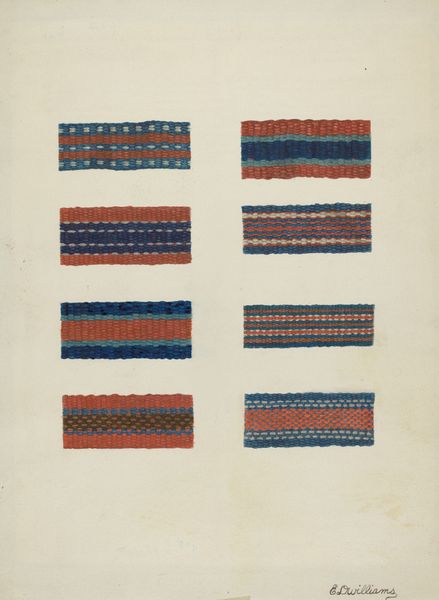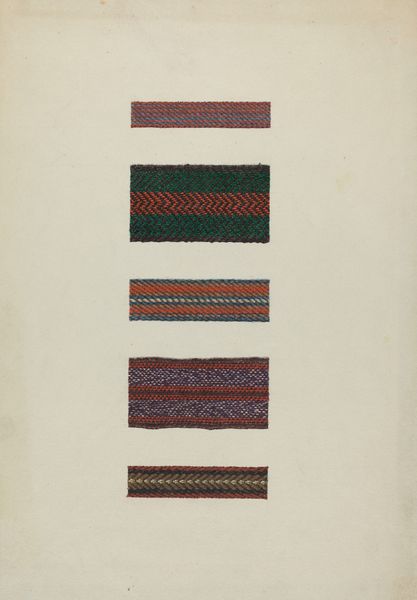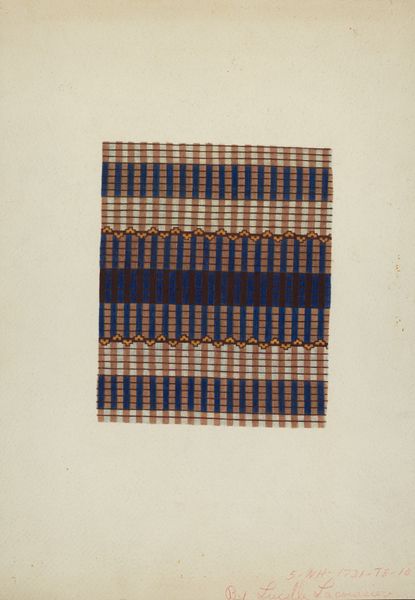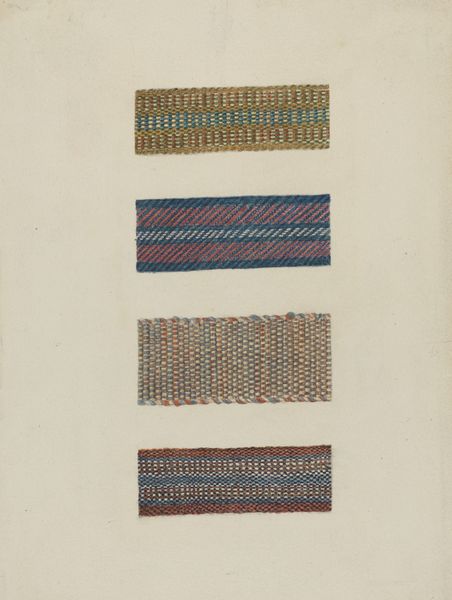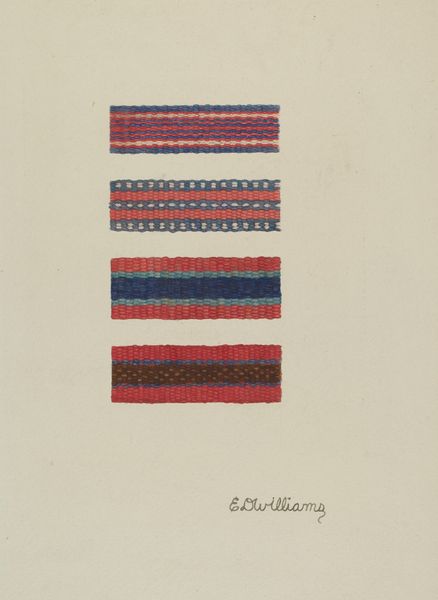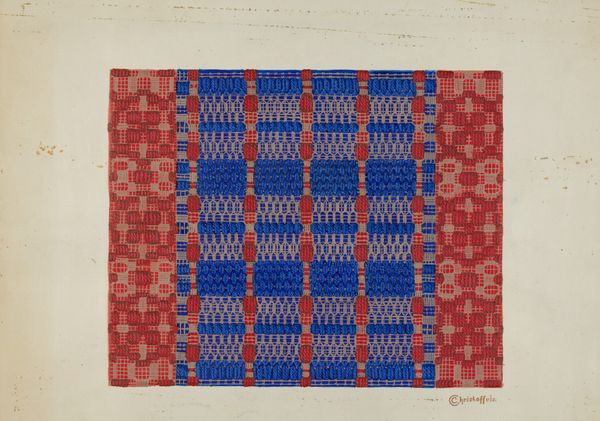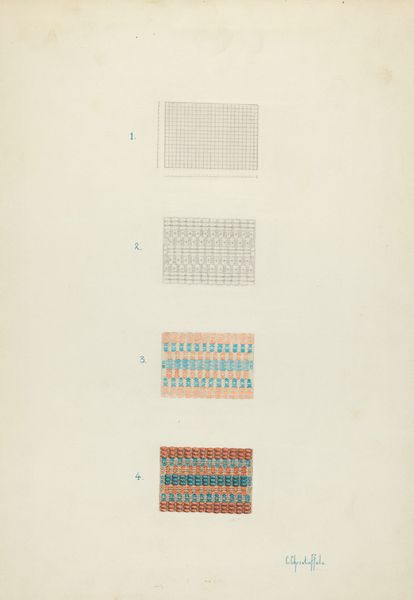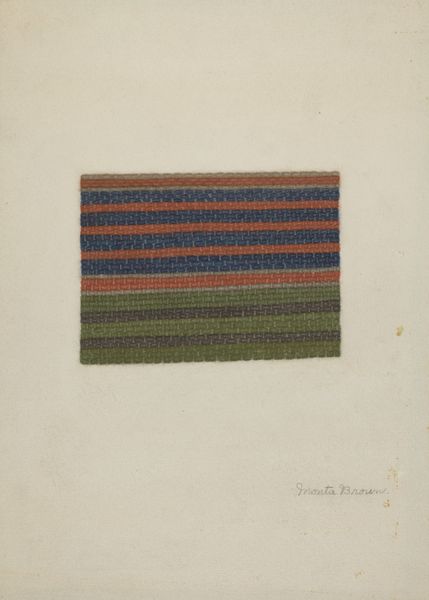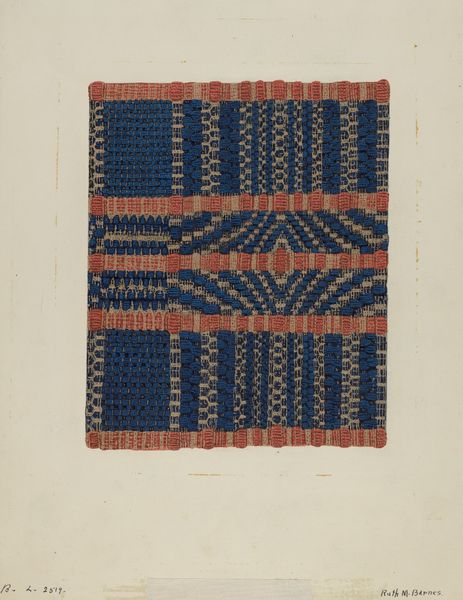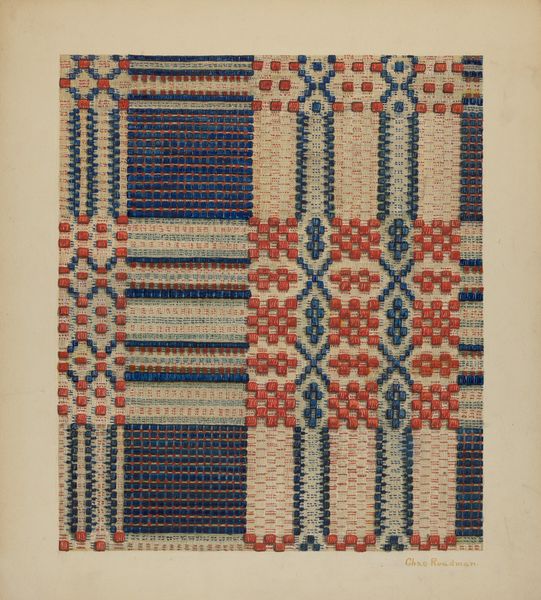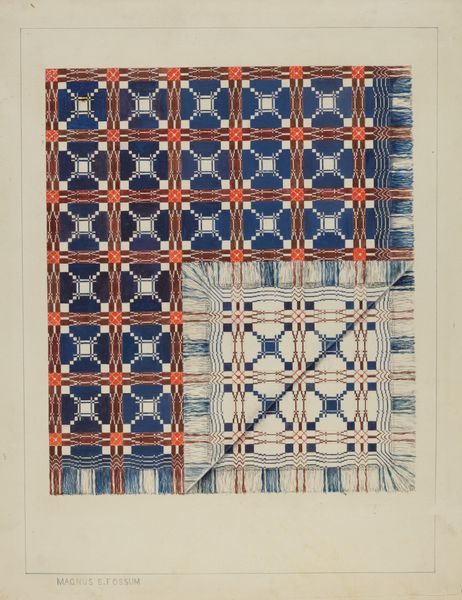
Dimensions: overall: 31.4 x 27.2 cm (12 3/8 x 10 11/16 in.)
Copyright: National Gallery of Art: CC0 1.0
Editor: Here we have “Fragments of Shaker Chair Braid,” created around 1938 by Orville A. Carroll, in a mix of drawing and textile mediums. It reminds me of samplers; so simple yet precise. What do you make of it? Curator: It's interesting you say that. How does the implied domesticity—of a chair, of woven fabric—strike you in light of the Shaker community’s values, which prized simplicity and function? This isn't just about the design itself, but the values embedded within it and how those values circulated and were perceived in the wider world. Editor: I hadn’t thought about that angle. The clean lines and color choices now seem like they’re telegraphing that specific philosophy, but could they be more widely interpreted, perhaps even be appropriated for other uses by another group of people who ascribe to similar minimalist tenets? Curator: Precisely! This design exists not in a vacuum, but within specific historical and cultural forces. Who was consuming these designs? How were they interpreted outside the Shaker community? And what can this textile study tell us about how the Arts and Crafts movement selectively reinterpreted and adopted various elements of this cultural ethos? Editor: So it's less about the chair itself and more about what that chair—and the braid that adorns it—represented in broader cultural conversations about labor, aesthetics, and spirituality at that moment in time? Curator: Exactly. Carroll's fragment isn't just documentation, it’s a reflection of the design's journey, and potentially a sign of its impact as a Shaker emblem for these values. The choices the artist made offer valuable perspectives into understanding these complex socio-political dynamics. Editor: I see. I was initially just drawn to the neatness, but you’ve shown me it connects to so much more than meets the eye! Curator: Indeed, by considering its historical and cultural contexts, it gives greater appreciation for textile like this one.
Comments
No comments
Be the first to comment and join the conversation on the ultimate creative platform.
